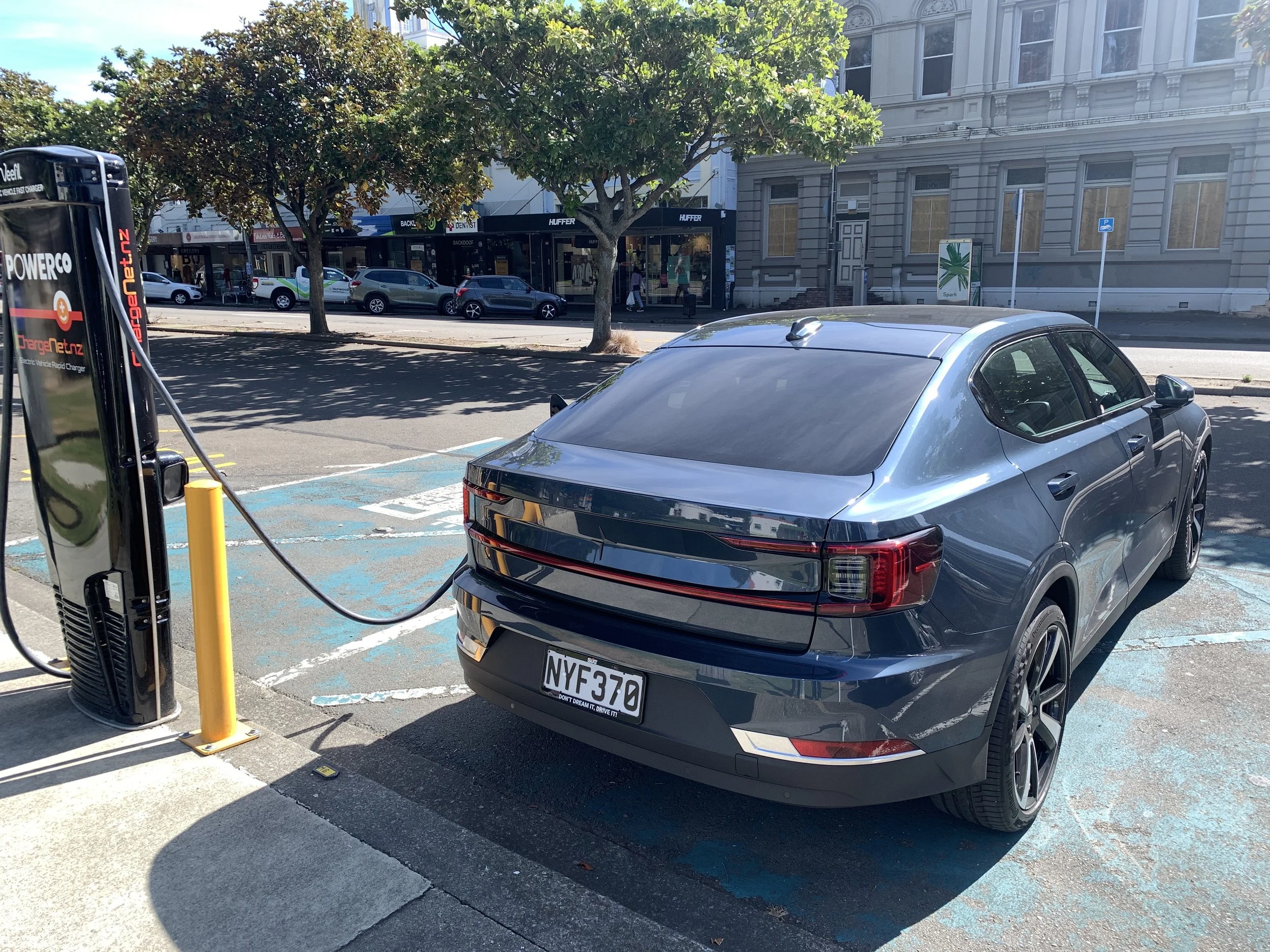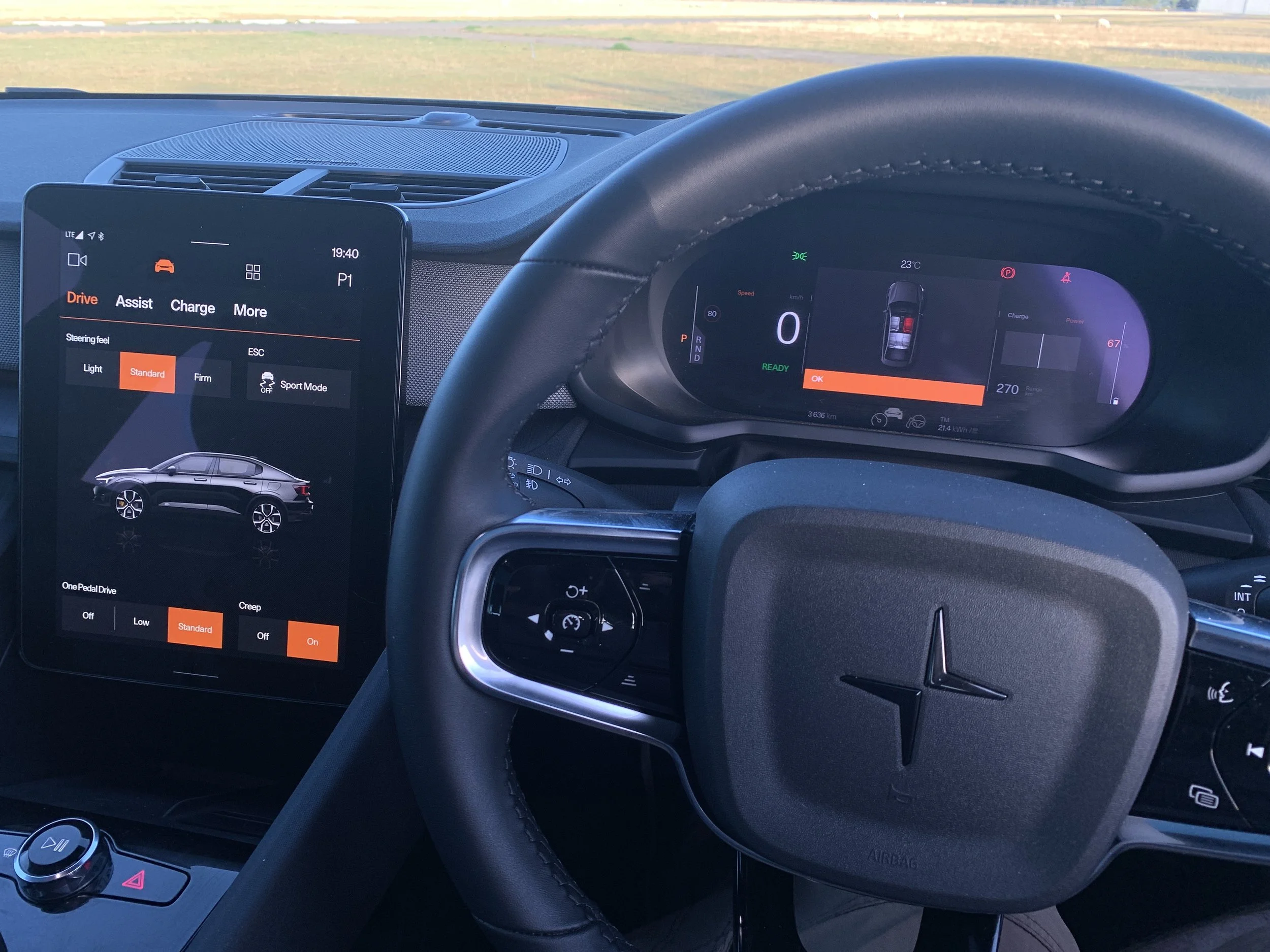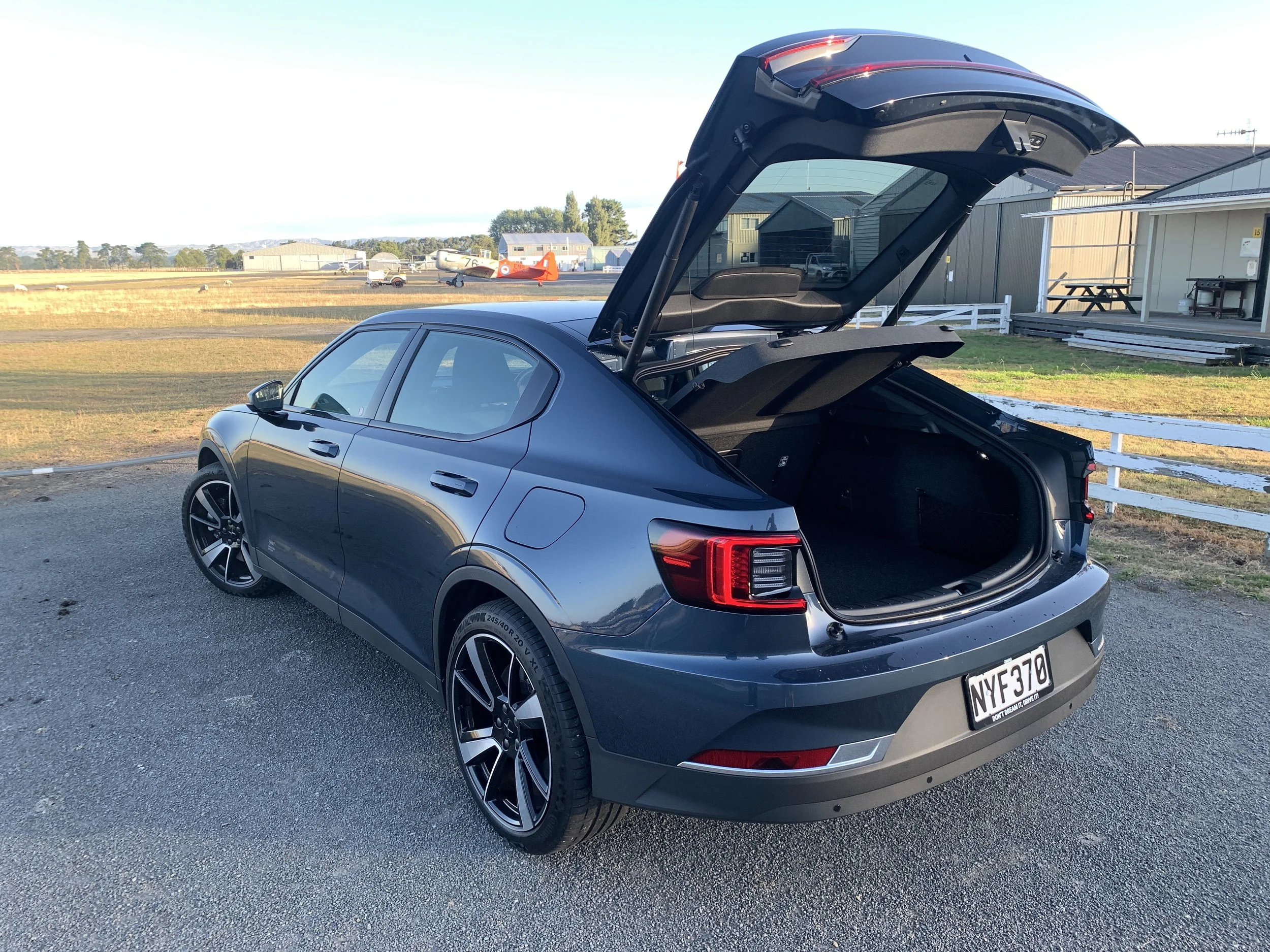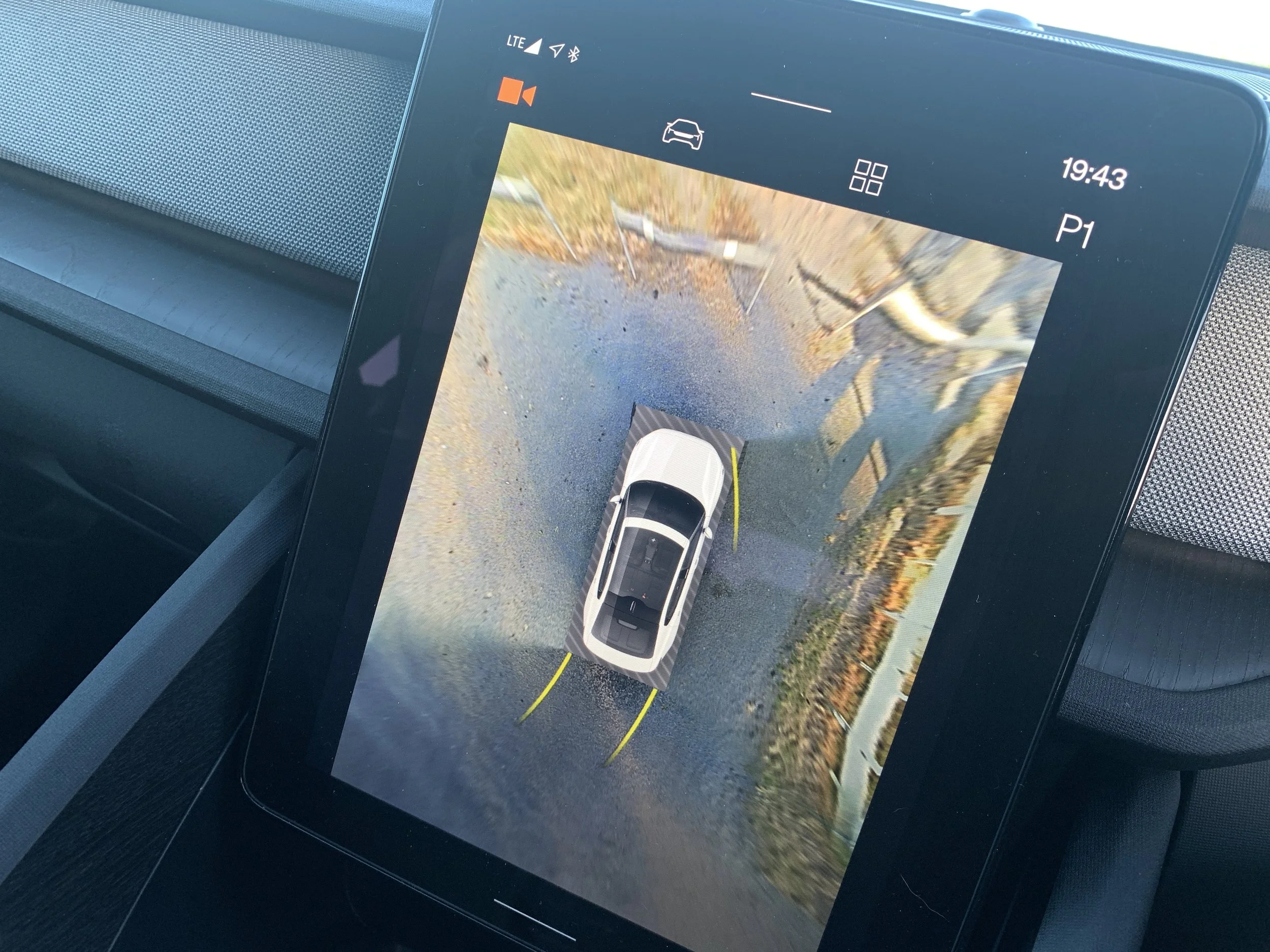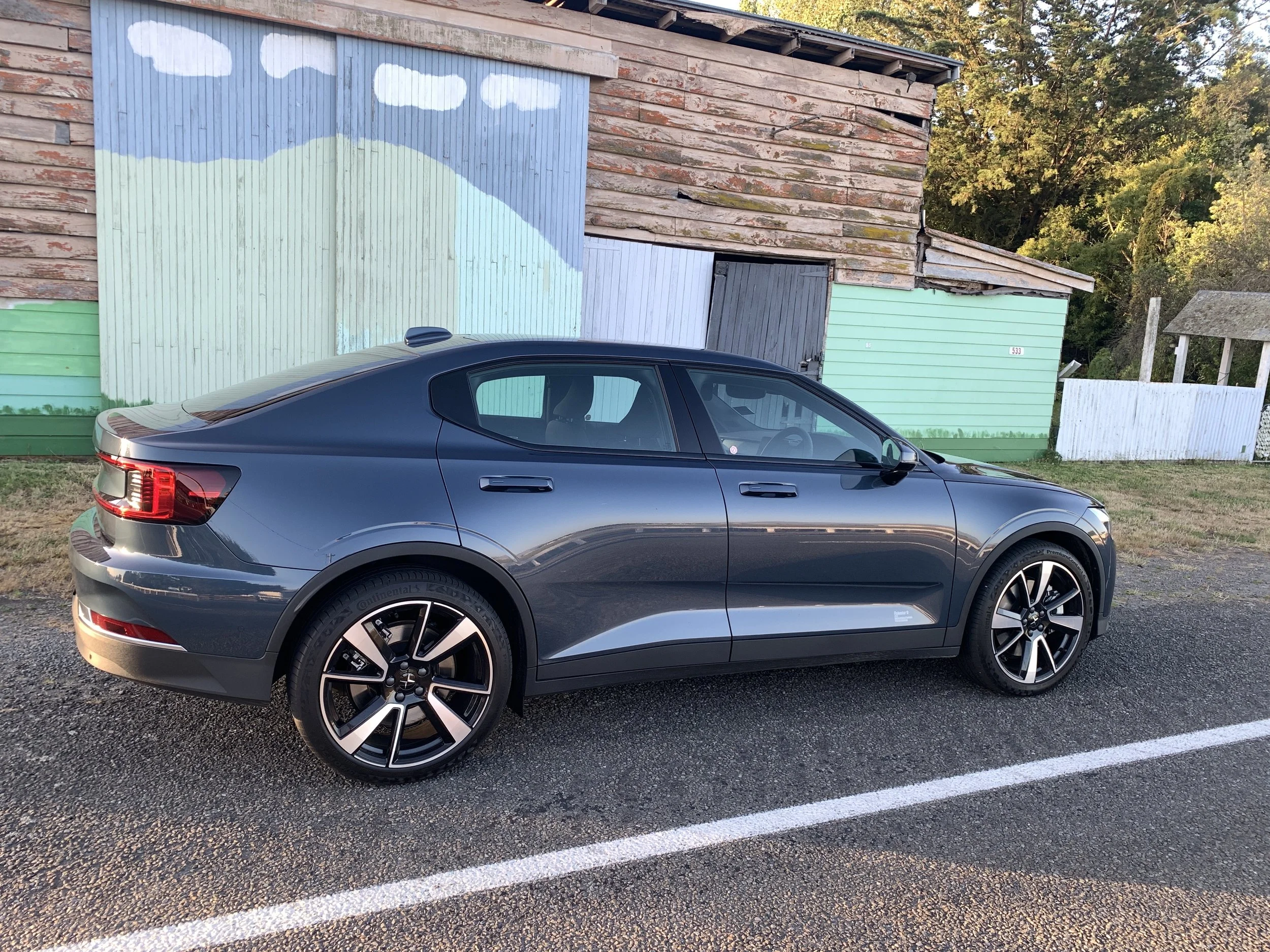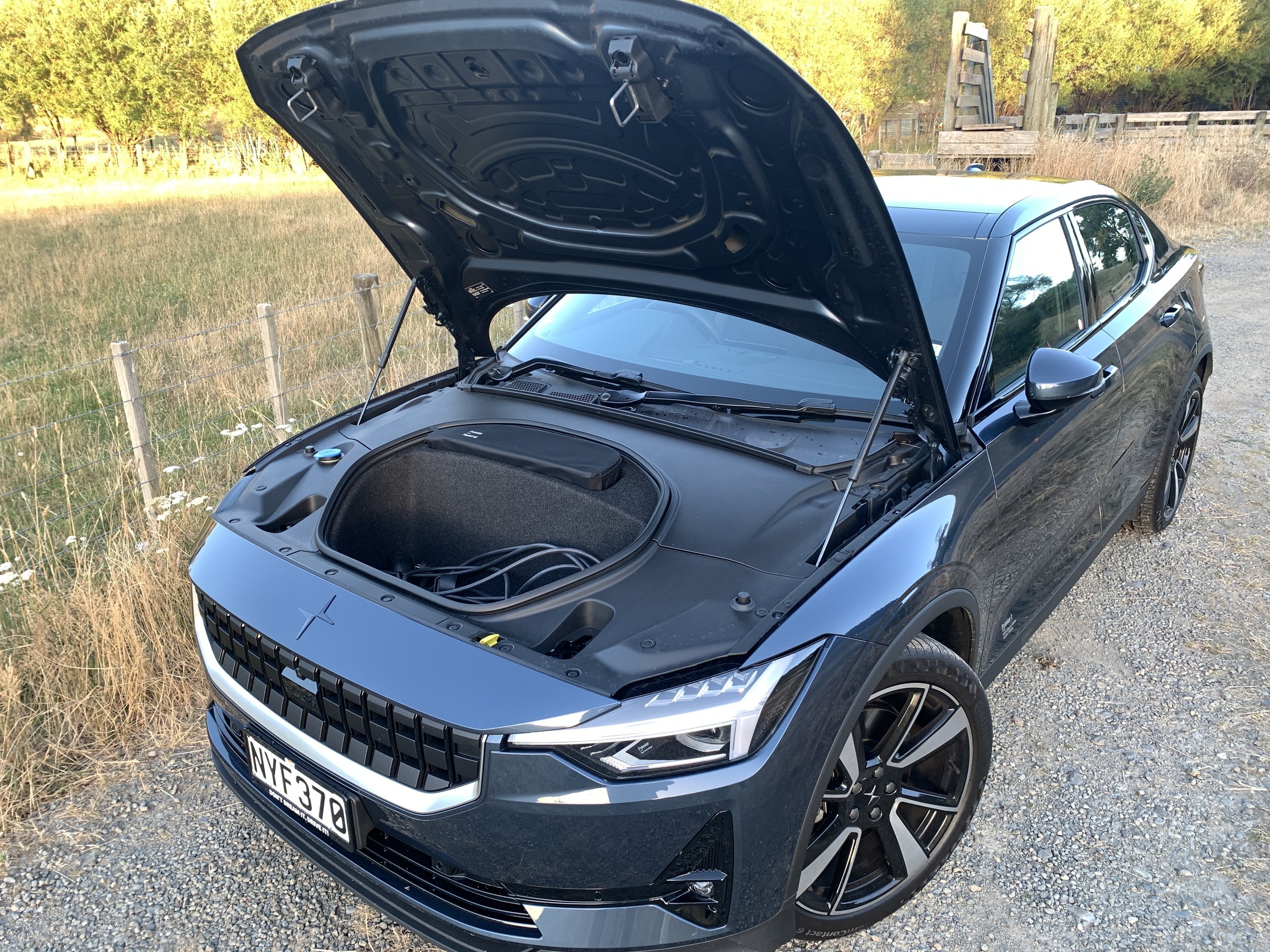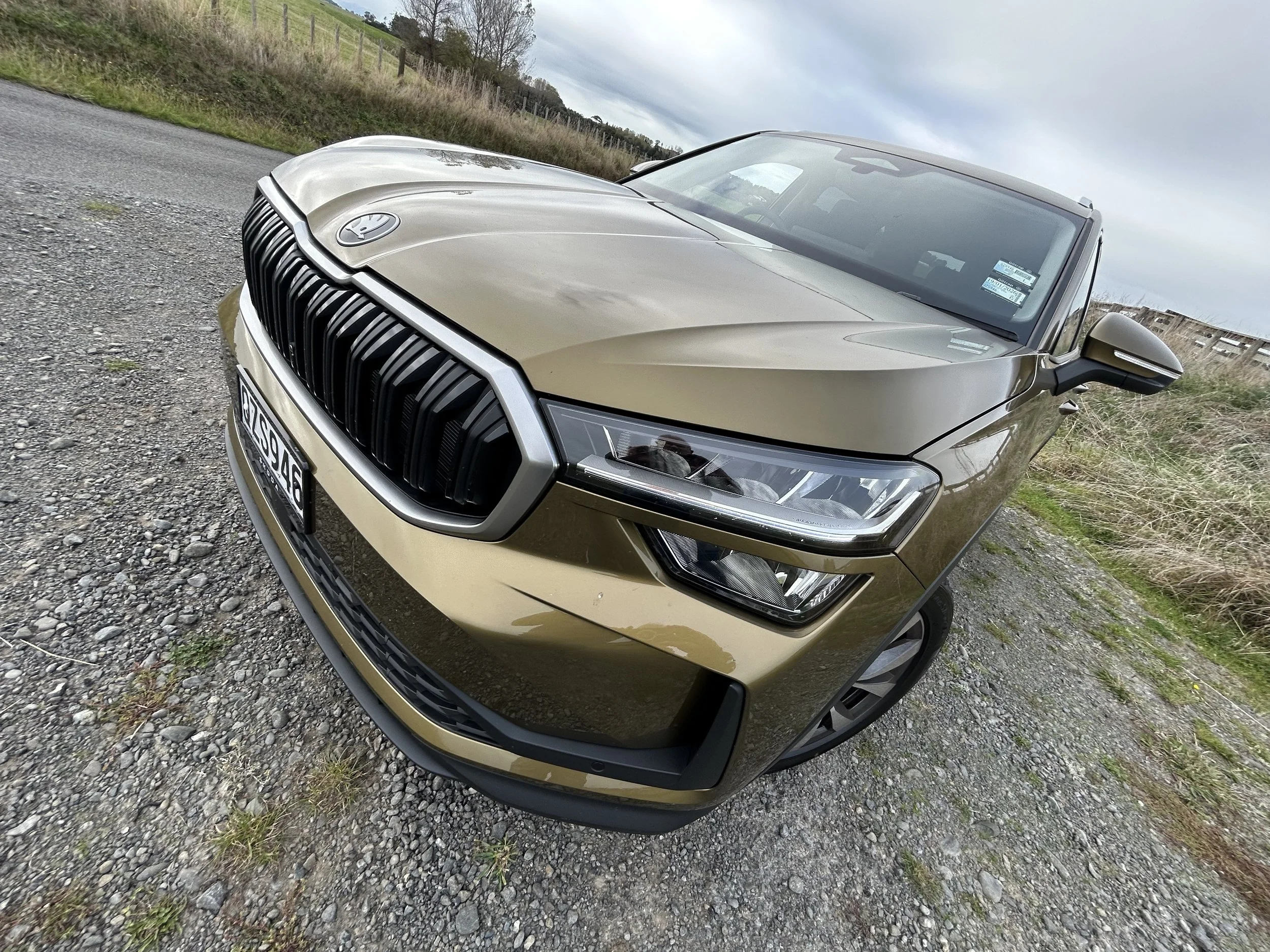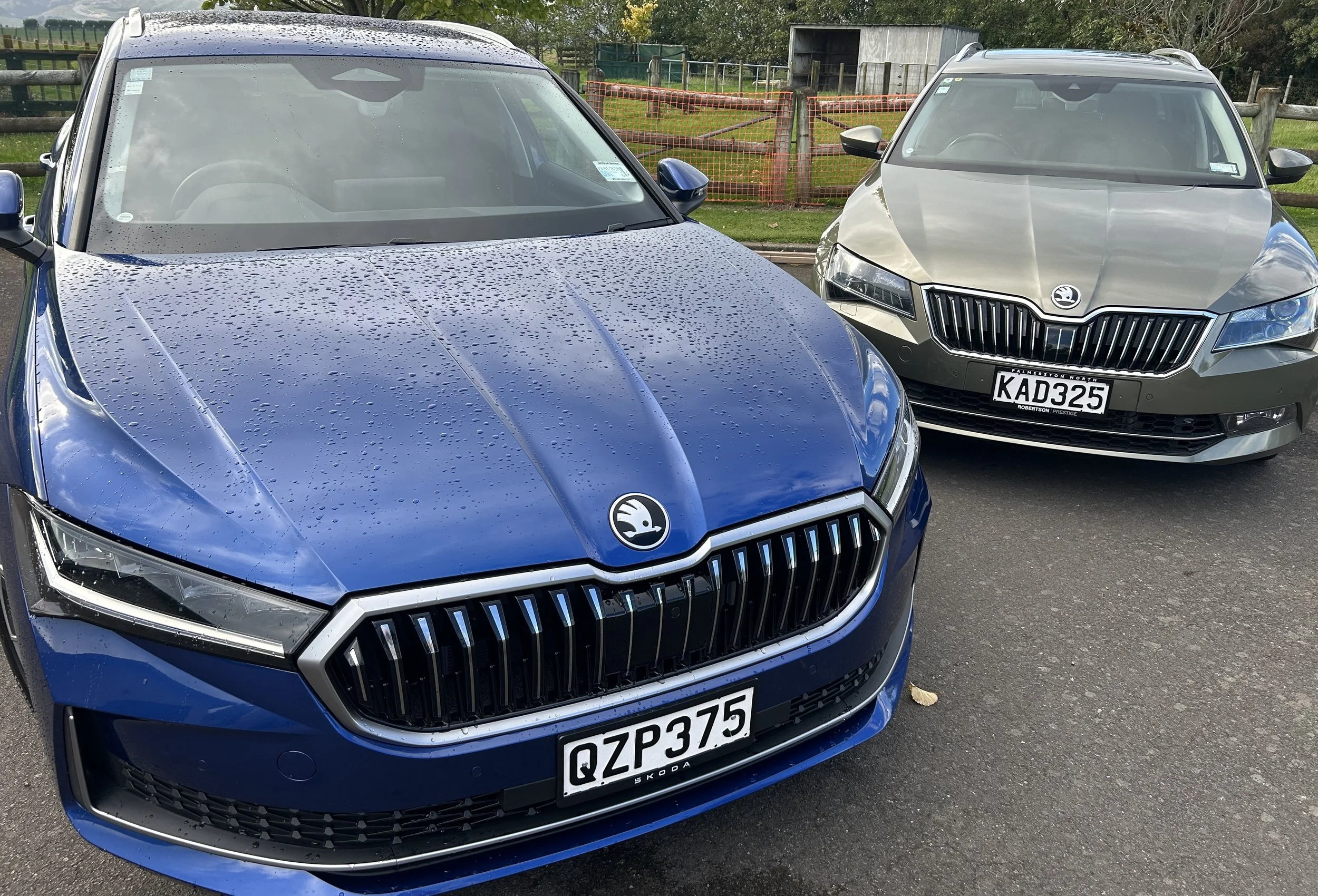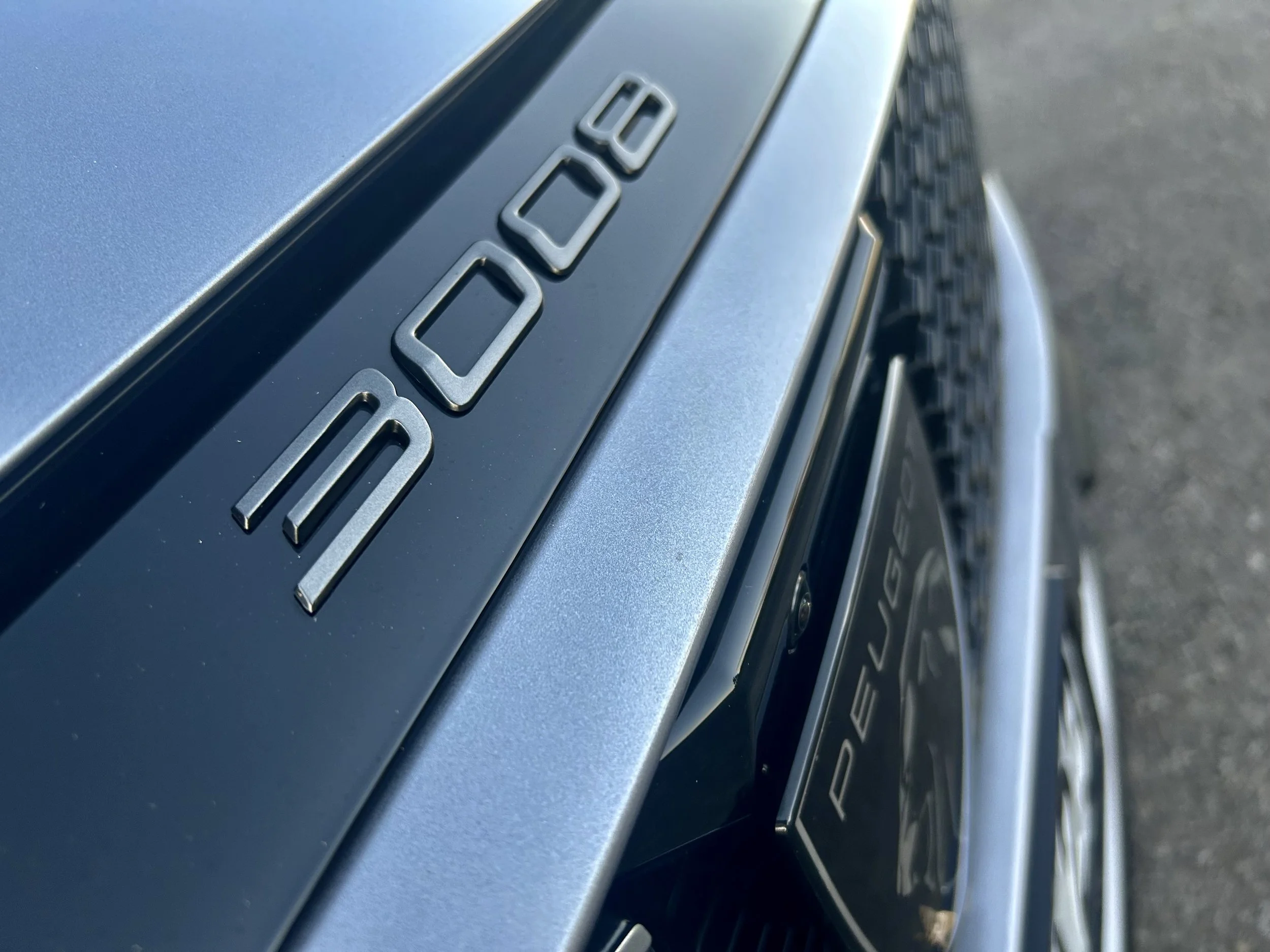Polestar 2 roadtest review: The new prime number?
/This Sino-Swedish collusion is an object lesson in how to make sustainable driving classy.
Price: $93,900.
Powertrain and economy: Dual electric motors, 300kW/660Nm, AWD, claimed range 480km (WLTP).
Vital statistics: 4606mm long, 1859mm wide, 1479mm high, 2735mm wheelbase, luggage capacity 405 litres, 20-inch alloy wheels.
We like: Overall execution, clever touches, build quality.
We don't like: Some minor quirks require rethinking, not quite roomy enough in the rear.
LAST year’s impressive dominance of the new electric car scene by Elon Musk’s entry sedan was a powerful performance, but Teslarati shouldn’t feel too smug about the Model 3.
Winter has come.
The Pole Star is the bright celestial body that can be seen in top part of the globe when looking directly north; it’s especially bright in coldest months. Now its automotive namesake can be seen by us, down in the deepest south. Once spotted, it’s going to easily remembered by electric vehicle fans.
Polestar’s entry is recent. The outfit is owned by Volvo Cars and, by extension, its parent, Geely. Once Gothenburg’s racing skunkworks, Polestar has reborn as a luxury electric sub-brand. Built in China, genetically Swedish. The platform, even the steering wheel, are V-rated, yet it’s not a Volvo with batteries included.
Still, the bloodlines are not disputed. The ‘Two’ bases off a Volvo concept. The technology delivery, including on the safety side, is up to Swedish standard.
Basically, it’s the most Volvo-esque non-Volvo you’ll ever come across, but in a sweet spot. It can lean on its parent brand for credibility yet is also free to lay down its own roots and drive its own route.
The specific direction for this Sino-Swedish collusion is to establish as the perfect kind of product to pull in independent thinkers, tech lovers and early adopters alike.
Does that sound like the self-same crowd that’s been so drawn to the Model 3? I’d think so.
Yet as much as the ‘Two’ appears destined to wipe smugness from the faces of Teslarati, on strength of this exposure I’d say it’s reasonable to content it might also be seen as a problem car for other brands besides.
On marketing position, it aims right at the Hyundai Ioniq 5, for one. Conceivably, though prices have yet to be announced, it might also become a headache for Kia’s EV6 aspiration. In the here and now, it’s not inconceivable to see the Polestar undermining the Jaguar I-Pace, perhaps also BMW’s incoming i4. Germany’s best-known electrified SUVs of the moment, the Mercedes EQC and Audi e-tron, might also be caught up in this fight.
Notwithstanding, it’s highly likely the heftiest punches might not be landed by the family’s heavyweight, the dual motor flagship version I’ve been driving.
This is the edition that delivers the best Polestar can offer in performance, range and fit-out.
It’s also the one variant that sits above the opportunity that has had huge influence on EV purchase patterns; Government’s Clean Car discount.
Whereas the mainstream single motor editions with a choice of two battery sizes (a 64kWh standard-range battery or a 78kWh long-range battery)
qualify for the maximum $8625 discount. In kicking off $100 shy of $94k, the twin motor (so, all-wheel drive), also with the 78kWh, does not.
Still, those who lose the helping hand still arguably hold a winning one nonetheless. Buy the best outfitted and you’re getting a swanky, high-spec ride.
A swift one, too.
The instantaneous way that electric cars produce power means it’s hard to find one that doesn’t feel snappy at launch. It’s also high time to face up to the whole ‘my EV is faster than your EV’ thing is now fast getting to the point of being childishly boorish. It’s relevant nonetheless to say a Polestar with a pair of 150kW motors, one on each axle, is not going to disappoint those who still equate this brand name with performance.
Step-off isn’t up to sock-in-the-guts smash that the Audi RS e-tron GT delivers, but there’s enough thrust to snap your head back into the seat’s restraint. For anyone needing convincing about how effective electric is at overcoming considerable mass – in this instance, 2123kg (so, more than a Model 3) – then one with a 0-100kmh time of 4.7 seconds is as good as any to demonstrate it.
Regardless it has enough oomph to embarrass some sports cars, this is not a car with the all-out, kick-ass roaring Viking spirit of the Polestars perhaps best known to Kiwis; the S60 V8 that ran in V8 Supercars Championship from 2014 to 2016 and spring boarded Scott McLaughlin’s career.
I’m not disappointed Polestar has steered clear of introducing artificial performance sounds; there’s more satisfaction, in a way, in how but it whumps into the very simple feat of overtaking with barely a sound.
Sure, there’s potential for thuggery. It feels nailed down – hardly surprising when the greater part of the kilo count is slung underfloor between the wheels – the handling seems reasonably taut and secure, the all-wheel-drive system provides all the traction you could ever need and you have to work hard to punish the extremely decent 245/40 tyres to the point of protest.
One thing. The biggest challenge with all EVs is to rid them of that ‘artificial’ feel; Polestar has had no more luck than anyone else.
The steering is numb, no matter which of the three weight settings you select, and it’s hard to exactly judge brake feel and throttle input. Plus, banging down rural roads reminds it's a large machine, almost 4.6 metres long, 1.9 metres wide and nearly 1.5 metres tall.
Wind back and it regains full composure to be quiet, dignified and easy-going, and that’s going to fine for most. Indeed, as much as it doesn’t fully ‘involve’, I’m not sure you’d really need it to.
The big option for the AWD is a $9000 pack that brings hand-adjustable Ohlins dampers and beefy Brembo brake discs. Intriguing? Sure, yet it’s got to be utterly OTT for general ownership. The shocks are not switchable in the car, and require the removal of the rear wheel-arch liners if you're going to adjust all four of them.
I have a race car with adjustable dampers and tweaking those is far more straightforward; but I tend not to meddle too much because I mainly compete at just one track and I’ve resolved the best setting for that environment. With a road car, each trip is different. I also wonder if the Ohlins car might be too rigid for our coarse chip. The standard tune is already on the firm side of fluid.
Moving on, there are some other ‘hands-on’ aspects … which enact as fingertip touch interactions via the main screen. You can decide whether or not you want the car to creep forward when you lift off the brake at a standstill. And also alter the amount of regenerative braking. Big decisions in themselves? Well, maybe not, but that’s life in an electric age. It’s all about simplicity.
Even starting it is taken out of your hands. Literally. The moment you sit in it, it’s good to go. Engage 'D' with the fabulous hoop-shaped selector on the transmission tunnel and you’re moving.
That’s right, no start button. Well, not on the dash. It’s the driver’s seat. My wife was a little iffy about this absolute definition of 'keyless entry and go', in which you just get in, put your foot on the brake pedal, nudge the gear selector into D and set off. I figured it has to be failsafe as, among all the world’s car makers, none have invested more into safety than Volv … erm, I mean Polestar.
The ‘Two’ doesn’t offer driving modes but is enthusiastic about 'one-pedal-driving' battery regeneration. You don’t have to use it, but as there are two modes, and the one that involves most heavily is a default called ‘standard’, it’s pretty obvious Polestar really hopes it will become your regular thing.
Sure, it takes a bit of getting used to the regenerative brakes, which feed energy back into the battery whenever you lift off the accelerator. Standard slows the car to such an extent you don’t often need to touch the brake pedal at all, except for an emergency stop. To get an idea of how influential it is, try ‘off’, preferably on a straight piece or road or simply a slight incline. The car just coasts until the twin effects of rolling and air resistance bring it to a halt; you’ll be surprised how far it will go. Did you know that Volvo is Latin for ‘I roll’?
Keeping regen operability for daily driving is beneficial. It doesn’t feel foreign for long and there's also a certain fun in trying to judge the 'braking' points for corners, Give Ways, roundabouts and traffic lights as you zizz along.
The benefit in it being an element that delivers benefit to the most crucial matter of all for EVs, the range, is not to be understated. There’s tangible effect.
How much distance any vehicle will achieve out of a fuel load will always come down to how its driven, but what’s apparent with the Polestar is that it has an especially honest battery.
Sure, the manufacturer-claimed full battery range of just under 500kms might prove tough to meet in real-world driving, yet I’d say you’d be safe to assume at least 400kms’ driving out of a single charge, assuming it’s a mix of town and country, as per my regime. At point of 200kms remaining range, the battery strength was at 50 percent; this with average consumption of 21.9kWh. A touch high? There’d been some brisk driving. Still, energy draw is not as haphazard as some.
What impresses, too, is the wider thought that’s gone in the battery’s operability. Set the sat nav for a charging station visit, for instance, and it will pre-warm the battery so that it might enable fastest uptake once hooked. With your home address inputted, it’ll continually update on how much energy is required to get there. It’s a cinch to set the power flow’s strength (32A is recommended) and the limit (they say recharge to 90 percent is best for battery health, but you can drop it way lower). When visiting a fast charger, the input being on the left rear means it’s simply a matter of reversing in to the DC side. No awkward positioning, no laying a cable over the paintwork.
Assurance the drive tech is intent on doing the right thing is abetted by the design’s overall vibe, though some quirks do uncover. Let’s agree it looks pretty decent at the kerbside. Solid-hewn, clean-shouldered, coolly unfussy but with the daring of a rakish roofline and some neat design detailing, such as the rear light cluster.
The interior is equally modern, very ‘V’-like with its minimalistic layout and dominated by a tablet-like touchscreen infotainment system. Measuring 11 inches across the diagonal, it’s the car’s single smartest feature, aping Tesla’s in size and philosophy and Volvo’s own in look and operability, though it steps ahead of any other car around by being powered by a Google OS.
In current state, it’s designed to integrate fully with an Android smartphone and to mimic one for usability. It works very well, but as an iPhone user I’m pleased to discover Apple CarPlay functionality is due to be added. I prefer Apple’s screen format.
The interface can be touch prompted or spoken to; it has no issue with ‘New Zilind uccents’ but it does seem to require a Google subscription to fully access all the Wifi-driven capabilities. While it told good ‘dad’ jokes and gave a decent lowdown on local restaurants, it advised me to update my access before sharing thought about Elon Musk and Tesla or highlight news of the day.
The AWD has standardises with a pilot pack optional to cheaper editions. This implements advanced safety and driver assistance features, such as the Pixel LED headlights with LED front fog lights, driver assistance with adaptive cruise control and pilot assist, a 360-degree surround-view camera, all-round parking sensors, and driver awareness including blind spot information system with steering support, cross-traffic alert with brake support, and rear collision warning.
The tester also delivered a full-length panoramic glass roof, Harman Kardon audio with 13 speakers, a higher quality vegan upholstery, Black Ash deco panels, heated front seats with memory, heated rear seats, heated steering wheel and heated wiper nozzles (did I mention Polestar engineers its vehicles in extreme conditions in various places around the world – from the searing heat of Arizona in the United States to the bitter cold of northern Sweden?)
Vegan? Sure. It uses significantly less plastic than most car interiors, more of the recycled stuff, and less harsh, environmentally nasty chemicals that component manufacturers can rely on are associated with the production of its various mouldings and ingredients.
The look and feel of some of those ingredients is unusual; some are harder than others and a few are just coarse. By and large, though, the standard of perceived quality is good and no surfaces or materials seem cheap or unpleasant. And as an expression of save-the-world sacrifice, it does a great job.
It’s a shame, then, that the cabin is also the one place where criticism will arise. In the main, that’s because while it’s physically substantial, the interior space is adequate, rather than impressive.
Talk of adults of average height being likely fit comfortably enough seems fair, but those taller will be thinking carefully. At 1.2 metres I found I could achieve a good driving position, but found the shape of the centre console intruded just enough on inboard knee room to cause a touch of discomfort after a couple of hours’ driving.
When I’m at the wheel, there’d no way a replicant ‘me’ would be comfortable behind. Foot room is an issue with the front chair set low – as I like it - and the backseat’s squab is uncomfortably short, yet that low roofline causes the primary issue. It simply does not enough rear headroom. Plus, the rear door cut makes ingress really awkward.
There are a couple of other design shortcomings. Despite the fact there's no drive shaft between the front axle and the rear, a large transmission tunnel runs the length of the cabin. It’s intrusive enough to renders it more a four-seater than a five. The pillars joining the roof to the body are also thick, so reduce visibility. The surround cameras are a great help, but in some situations, like pulling out of angled intersections, you’ll feel nervous.
The cupholders aren’t sensibly located (though where else they could go, I just don’t know) and who gives a car a glass roof then fails to include a retracting blind or electro-chromatic tinting? The air con’s good, yet the top of your head will bake. A fix is said to be coming for this as well, though I cannot see how it could be a retrofit.
There’s better news when it comes to luggage space. The boot in the back in simply massive but the one in the front, where an engine would place, is pretty decent, too. The latter is where you will stow the supplied charging cable. It runs gas struts, which makes lifting easy, but you have to take care when closing, to make sure both latches click properly. The tailgate is electric motor-driven.
Even with flaws – and of those, the slightly cramped rear is the most irksome - the Polestar 2 nonetheless scores as a well-polished, well-rounded and well-executed vehicle.
More than the neatly integrated Google operating system sets it apart. It also brings distinctive looks and more than decent range. The build quality is brilliant. Plus, you need not sweat that there’s just one national Polestar store should something go wrong (EV drivetrains are bulletproof, but cars are still cars, right?) – any Volvo outlet can deal with it.
Another positive factor is that it’s been as sustainably built as possible. Polestar has been very open about the impact on the environment and traceability of the materials used in manufacturing. That’s got to be valued.
And don’t think of Polestar in the singular. In the next few years, Polestar aims to increase sales tenfold (versus its 2021 level) to 290,000 per year by 2025, and it’ll do it with extra models: The SUV-styled 3 and 4 and a fastbacked sedan, the 5, were all signalled last June.


